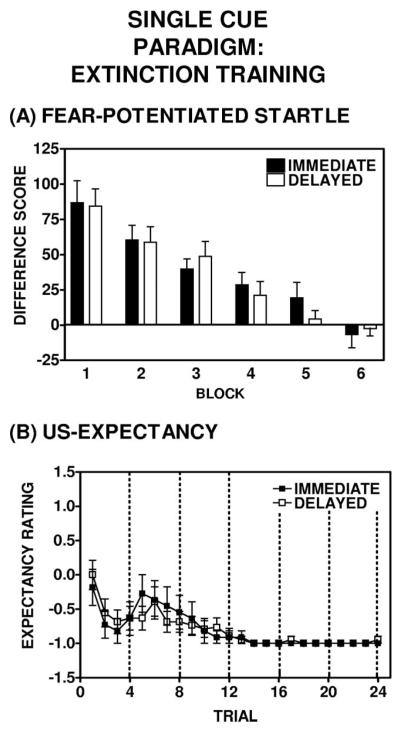Figure 3.
Single cue paradigm: Summary of extinction training in the extinguishers. (Panel A) Within-session extinction of fear-potentiated startle, as expressed as difference scores from baseline, in the immediate (closed bars) and delayed (open bars) extinguishers. Extinguishers were defined as those subjects that displayed at least 50% extinction of fearpotentiated startle during extinction training (Block 6 vs. Block 1). There was no difference between the immediate and delayed extinguishers with respect to the magnitude within-session extinction over the course of the session. Each block consisted of four trials. (Panel B) Subjects’ unconditioned stimulus (US) expectancy ratings from the immediate (closed squares) and delayed (open squares) extinguisher subgroups. US expectancy responses on the first four trials of extinction training (Block 1) revealed significant recall of the habituation phase that preceded acquisition during the subjects’ previous test session. Extinguishers from each time group also showed a significant within-session decrement in US expectancy ratings during extinction training. In a comparison of Trial 6 with Trial 24, immediate extinguishers F(1, 10) = 4.48, p= .06; delayed extinguishers F(1, 15) = 8.98, p < .01. Dashed vertical lines demarcate the six blocks constitute the extinction test session and allow for direct comparison with the fear-potentiated startle data shown in Panel A.

